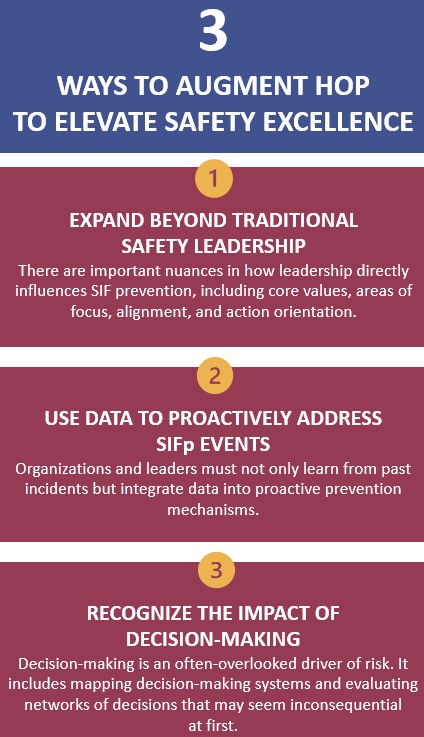June 23, 2025
Augmenting HOP to Elevate Safety Excellence
Introduction: The Evolution of HOP in Safety Excellence
Human and Organizational Performance (HOP) emerged in the 1990s as a welcome new way of thinking about injury prevention. Initially outlined by Dr. Sidney Dekker1 and Dr. James Reason, HOP has, for many organizations, become a cornerstone of safety strategies globally. HOP’s core principles grew from Dr. Reason’s Swiss Cheese Model2 of system failures, emphasizing that accidents result from multiple systemic failures rather than isolated human errors. This systems-oriented perspective reshaped how organizations approach safety, urging them to design environments that proactively defend against human error.
However, while HOP has made significant strides in helping organizations enhance their safety culture, we believe that it is just one piece of the puzzle. This article offers insights into how safety leaders can augment traditional HOP strategies to drive better safety outcomes.
Enhancing a Strong Foundation
We agree with HOP’s foundational belief that systems, not individuals, are the primary sources of exposure within organizations. It is critical for leaders to understand injury causation by analyzing the systemic flaws that drive exposure to risks however, we believe leadership, data use, and decision-making must be addressed in greater depth to significantly impact Serious Injury and Fatality (SIF) prevention.
1. Expand Beyond Traditional Safety Leadership
HOP emphasizes leadership actions, and there are important nuances in how leadership directly influences SIF prevention.
- Core Values: Leaders who demonstrate SIF prevention as a core value positively influence organizational culture and performance, while reducing exposure to SIF events.
- Targeted Focus: Not all incidents should be treated equally. By prioritizing SIF prevention, organizations can allocate resources more effectively where their impact will be greatest.
- Deep Alignment: It is important that all levels of leadership have a common understanding of and commitment to safety. Leaders should focus on developing influencing skills, enhancing core safety knowledge, refining cross-functional collaboration skills, and facilitating one-on-one engagement to build a cohesive culture around SIF prevention.
- Action-Oriented: Ensure insights are not just theoretical but are rooted in practical application to create an environment where safety is embedded in every decision and action.
2. Use Data to Proactively Address SIFp Events
Organizations and leaders must not only learn from past incidents, but also go a step further by integrating data into proactive prevention mechanisms.
- Historical Data Evaluation: Critically analyze past incidents to identify patterns that indicate potential SIF events (SIFp). Leverage this data to take preventive action before incidents occur.
- Continuous Improvement: The integration of SIFp data into prevention strategies fosters ongoing improvement, reducing the reliance on actual incidents for learning. This forward-looking approach goes beyond traditional HOP methods and enhances an organization’s ability to anticipate and mitigate risks.
3. Recognize the Impact of Decision-Making
Decision-making is a critical yet often overlooked driver of risk.
- Network of Decisions: Individual decisions may seem inconsequential at first glance, but when viewed as part of an interconnected network, they reveal even more underlying systemic risks. Be sure to identify decision-making patterns that contribute to SIF exposure, including patterns of cognitive bias. Even decisions made years ago can create unintentional exposure to risk.
- Decision-Making Systems: Decision-making systems that not only identify risks but also address overall organizational functioning are vital to improving performance in a tangible way. This is a key way organizations get a deeper understanding of how their decision-making processes impact SIF prevention – and more.

Conclusion
By focusing on leadership, data-driven prevention mechanisms, and strategic decision-making, organizations can take a comprehensive approach to safety that builds on traditional HOP models. Leaders who focus in these areas can expect to elevate their safety performance, reduce SIF risks, and create a sustainable culture of safety excellence.


